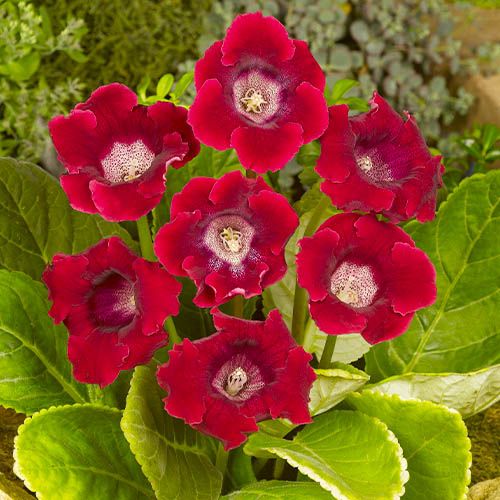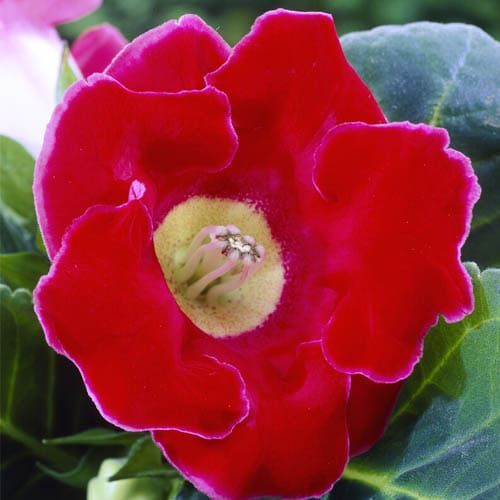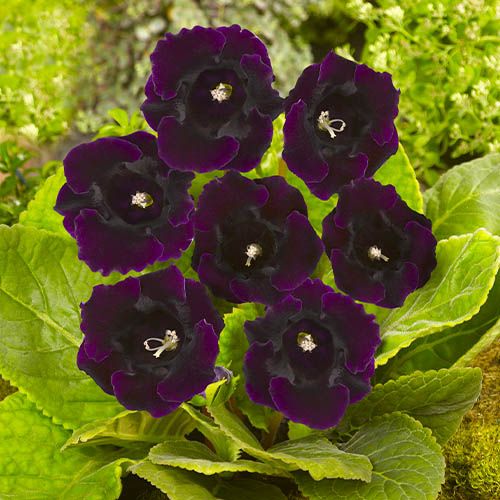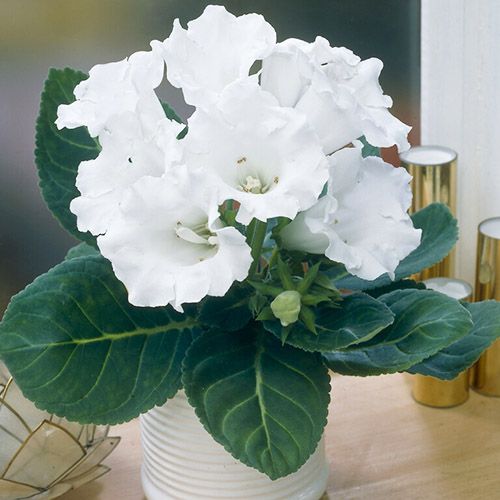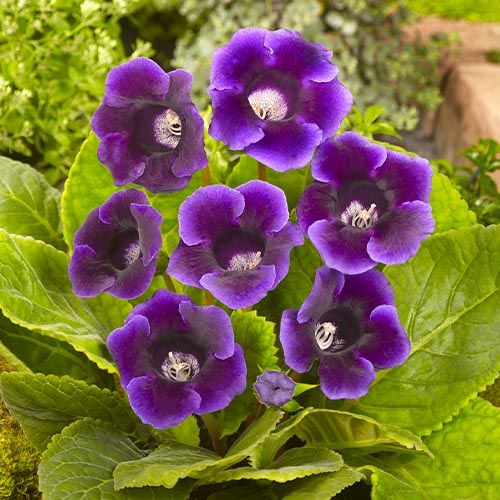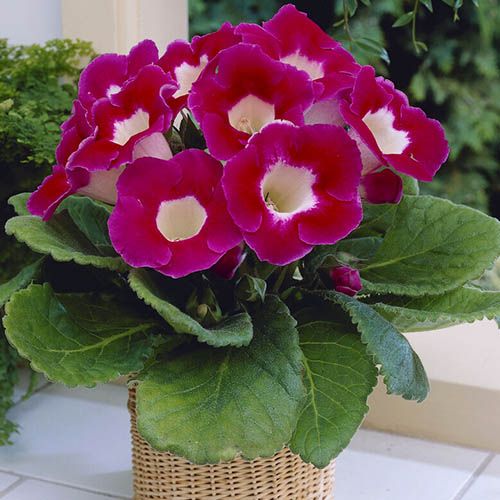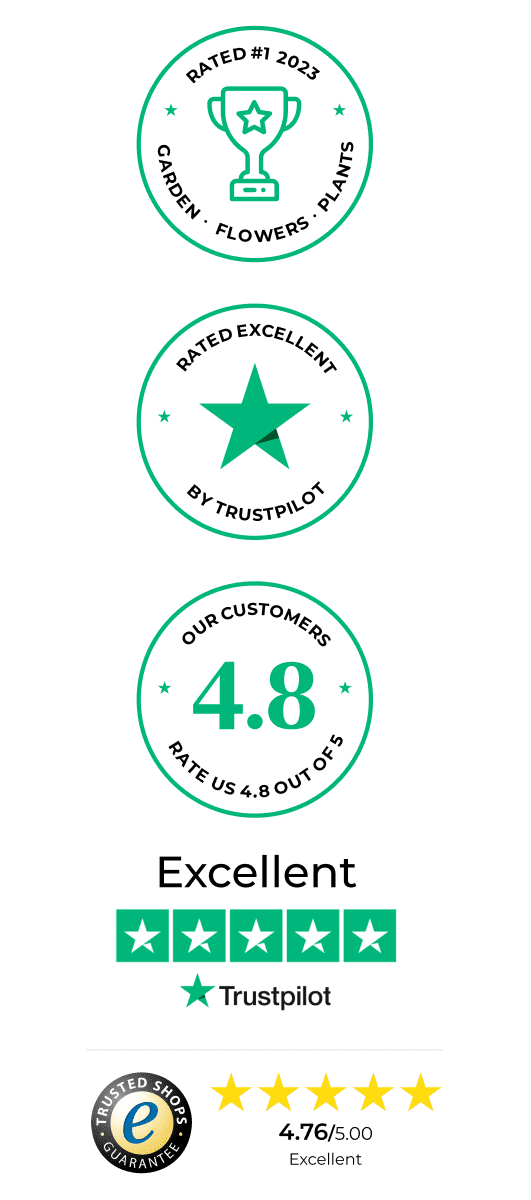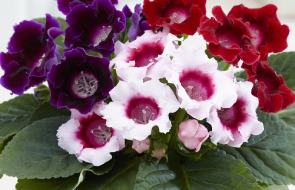
Gloxinia (Sinningia speciosa)
Gloxinia (Sinningia speciosa) Bulbs
Last Reviews
Discover the beauty of Gloxinia Bulbs
Gloxinia bulbs are renowned for their stunning, bell-shaped flowers and vibrant colors, making them a popular choice for indoor gardens. Originating from the tropical regions of South America, Gloxinia bulbs are prized for their lush foliage and ability to thrive in indoor environments. These summer-flowering bulbs, in particular, are known for their superior quality and performance, making them the preferred choice for many gardeners.
How to Choose the Best Gloxinia Plants for Sale
Selecting the best Gloxinia plants to buy for your indoor garden requires consideration of several factors. Look for plants with healthy foliage, free from signs of pests or diseases. Choose varieties that suit your preferences in terms of bloom color and size. Additionally, purchasing from reputable suppliers ensures the quality and authenticity of the plants.
Types and Varieties of Gloxinia
Gloxinia bulbs for sale come in a variety of types and varieties, each offering its own unique characteristics and growing requirements. Some popular varieties include:
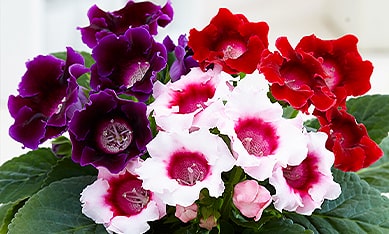
- Gloxinia (Sinningia) Corina: This variety features large, bell-shaped flowers in shades of pink, purple, and white. 'Corina' is prized for its elegant appearance and vigorous growth habit.
- Gloxinia (Sinningia) Violacea: Known for its deep purple flowers with contrasting yellow throats, 'Violacea' adds a touch of drama to any indoor space. This variety blooms prolifically, providing a stunning display of color.
- Gloxinia (Sinningia) Mont Blanc: With its pure white flowers and delicate foliage, 'Mont Blanc' exudes elegance and sophistication. This variety is perfect for creating a serene atmosphere in any room.
- Gloxinia (Sinningia) Hollywood: Featuring vibrant, bi-colored flowers in shades of red and white, 'Hollywood' is a showstopper in any indoor garden. This variety is known for its striking appearance and long-lasting blooms.
When choosing Gloxinia bulbs for your indoor garden, consider factors such as bloom color, plant size, and bloom time to ensure a beautiful and harmonious display.
Growing Gloxinia: Planting and Care
Gloxinia plants thrive in well-draining soil with a slightly acidic to neutral pH. When planting, ensure pots have drainage holes to prevent waterlogging, which can lead to root rot. Place pots in a location with bright, indirect light, avoiding direct sunlight. Keep the soil consistently moist but not soggy, and fertilize regularly during the growing season to promote healthy growth and abundant blooms.
Preparing the Soil for Gloxinia Bulbs
Before planting Gloxinia bulbs, it's essential to prepare the soil to provide optimal growing conditions. Use a well-draining potting mix rich in organic matter to promote healthy root development and ensure proper drainage. Gloxinia bulbs thrive in soil that is slightly acidic to neutral, so amend the soil as needed to achieve the right pH level.
Planting Gloxinia Bulbs
Plant Gloxinia bulbs in pots or containers with drainage holes to prevent waterlogging. Place your Netherlands bulbs in the soil with the pointed end facing upwards and cover them with a thin layer of soil. Water your Dutch bulbs thoroughly after planting to settle the soil and encourage root growth. Keep the soil consistently moist but not waterlogged, as Gloxinia bulbs are susceptible to root rot if overwatered.
Caring for Your Gloxinia
Proper care is essential for maintaining healthy and vibrant Gloxinia plants. Place pots in a location with bright, indirect light, avoiding direct sunlight, which can scorch the leaves. Water Gloxinia plants regularly, allowing the soil to dry out slightly between waterings.
Fertilize plants every 2-4 weeks during the growing season with a balanced fertilizer to promote lush foliage and abundant blooms. Monitor plants for signs of pests and diseases, and treat promptly to prevent damage.
Tips for Extending the Blooming Season of Gloxinia
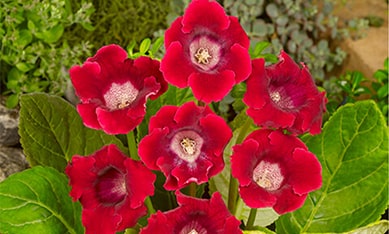
1. Provide Adequate Sunlight: Place your Gloxinia plant in a location with bright, indirect sunlight to promote continuous blooming without scorching the delicate flowers.
2. Water Carefully: Water your Gloxinia plant evenly and moderately, allowing the soil to dry out slightly between waterings. Avoid overwatering, as soggy soil can lead to root rot and premature flower drop.
3. Maintain Optimal Humidity: Gloxinias thrive in high humidity environments. Consider placing a humidifier nearby or using pebble trays filled with water to increase humidity around the plant.
4. Deadhead Spent Flowers: Remove faded or wilted flowers regularly to encourage the production of new blooms and extend the blooming period.
5. Provide Regular Feeding: Feed your Gloxinia plant with a balanced liquid fertilizer every 2-4 weeks during the growing season to promote healthy growth and continuous flowering.
Implementing these tips will help you extend the blooming season of your Gloxinia plant, allowing you to enjoy its colorful and vibrant flowers for a longer period.
Order Your Gloxinia Today
Ready to add a touch of beauty to your indoor garden with premium Dutch bulbs sourced from Holland? Buy Gloxinia bulbs today! Our online store offers a wide selection of high-quality plants, ensuring that you find the perfect addition to your home.
Don't miss out on the opportunity to enhance your home with the vibrant colors and lush foliage of Gloxinia plants. Order Gloxinia bulbs now and experience the beauty of Holland Gloxinia bulbs in your own home.
Frequently asked questions about Spring Flowering Gloxinia (Sinningia speciosa)
How to plant gloxinia bulbs?
How to grow and care for gloxinia?
What month do you plant gloxinia bulbs?
Towards the end of February, gloxinia bulbs wake up. This is exactly the time when they need to be transplanted. The bulbs prepared for planting should be as bare as possible (almost like a potato) and strong, not flabby. If you are looking for summer flowering bulbs, check Anemones and Callas.













